Are you curious to know just how many calories are hiding in your favorite side salad? When it comes to salads, the calorie content can vary significantly depending on the ingredients used. Understanding the nutritional facts of side salads is essential for maintaining a healthy and balanced diet. In this article, I will delve into the world of side salad calories, exploring different types of salads, the impact of dressings and toppings, and the importance of portion control. Let’s uncover the truth and make informed choices for our well-being.
- Side salad calorie content can vary based on ingredients and dressings used.
- Popular salads like Caesar salad, pasta salad, chef salad, Greek salad, and Cobb salad have different calorie counts.
- Mayo-based salads like tuna salad, egg salad, chicken salad, and macaroni salad also have varying calorie contents.
- Commercially available salads from restaurants can be high in calories, so it’s important to be mindful of the dressings and toppings added.
- Not all carbohydrates are bad for you; they are essential for brain function and provide important nutrients.
Stay tuned as we explore the world of side salad calories, debunk myths, and provide valuable insights for creating healthy and low-calorie options. Let’s make every bite count!
Understanding the Calorie Content of Popular Salads
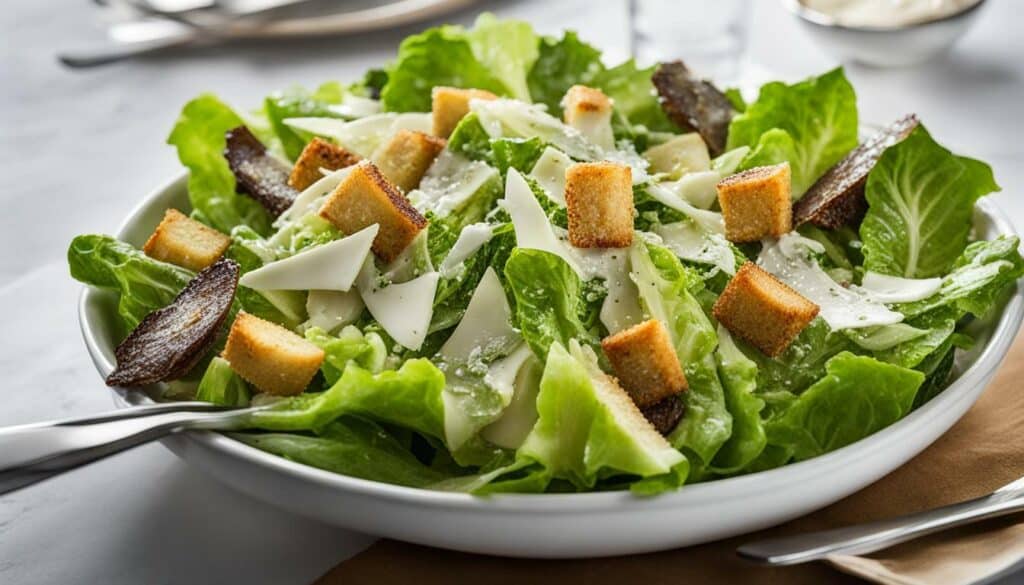
Let’s dive into the nutritional facts and calorie counts of popular salad varieties! When it comes to salads, the calorie content can vary significantly depending on the ingredients used. Let’s take a closer look at some popular salad types:
- Caesar Salad: A classic favorite, Caesar salad typically includes romaine lettuce, croutons, Parmesan cheese, and Caesar dressing. While it may seem like a healthy choice, a typical Caesar salad can contain around 300-400 calories per serving.
- Pasta Salad: This salad often features cooked pasta, vegetables, and a creamy dressing. However, the calorie content can vary depending on the type and amount of dressing used. It’s important to be mindful of portion sizes as pasta salad can be high in calories, ranging from 250-400 calories per serving.
- Chef Salad: A chef salad typically includes lettuce, tomatoes, cucumbers, sliced ham, turkey, and hard-boiled eggs. The calorie content of a chef salad can range from 200-400 calories, depending on the portion size and choice of dressing.
- Greek Salad: Known for its vibrant flavors, a Greek salad usually consists of lettuce, tomatoes, cucumbers, red onions, feta cheese, olives, and a tangy dressing. With a calorie count ranging from 200-400 calories per serving, it’s a refreshing and nutritious choice.
- Cobb Salad: Cobb salad is a hearty salad that typically includes lettuce, grilled chicken, bacon, avocado, hard-boiled eggs, tomatoes, and blue cheese. While it’s packed with protein and nutrients, Cobb salad can be higher in calories, averaging around 400-600 calories per serving.
As you can see, the calorie content of popular salads can vary depending on the ingredients used. It’s important to be mindful of the portion sizes and the dressings added, as they can significantly impact the overall calorie intake. By making informed choices and practicing portion control, you can still enjoy these delicious salads while maintaining a balanced diet.
Table: Calorie Content of Popular Salad Varieties
| Salad Type | Calories per Serving |
|---|---|
| Caesar Salad | 300-400 |
| Pasta Salad | 250-400 |
| Chef Salad | 200-400 |
| Greek Salad | 200-400 |
| Cobb Salad | 400-600 |
By being mindful of the calorie content of your favorite salads, you can make healthier choices that align with your dietary goals. Whether you’re looking to maintain or lose weight, understanding the nutritional facts is essential for a well-balanced and fulfilling meal.
If you’re a fan of mayo-based salads, it’s important to be aware of their calorie content and the toppings that can contribute to it. Mayo is a common ingredient in salads like tuna salad, egg salad, chicken salad, and macaroni salad, and while it adds creaminess and flavor, it can also significantly increase the calorie count. For example, a typical serving of tuna salad made with mayo can contain around 290 calories, while chicken salad can pack around 320 calories per serving.
But it’s not just the mayo that affects the calorie content of these salads. The choice of toppings also plays a role. Adding high-calorie ingredients like bacon, cheese, or croutons can quickly elevate the calorie count. For instance, a side salad topped with bacon and cheese can have over 400 calories, while a macaroni salad with both mayo and cheese can exceed 500 calories per serving.
To enjoy mayo-based salads without going overboard on calories, there are some simple strategies you can follow. First, consider using lighter versions of mayo or alternatives like Greek yogurt to reduce the calorie content. Additionally, you can incorporate more fresh vegetables and lean proteins into the salad to bulk it up without adding excessive calories. Finally, be mindful of portion sizes and avoid loading up on high-calorie toppings. By making these adjustments, you can still indulge in your favorite mayo-based salads while keeping your calorie intake in check.
| Salad Type | Calories per Serving |
|---|---|
| Tuna Salad | 290 |
| Egg Salad | 320 |
| Chicken Salad | 320 |
| Macaroni Salad | 500+ |
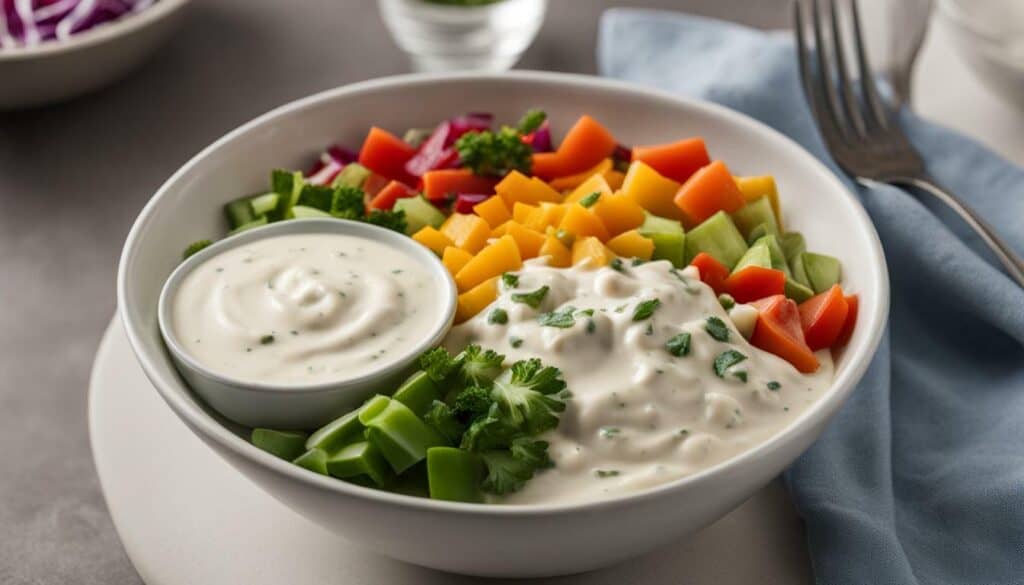
Dining out? Don’t forget to consider the calorie content of the salads offered by popular restaurants. When trying to make healthier choices, it’s important to be mindful of the nutritional information in the salads from places like Wendy’s, Olive Garden, Subway, and Panera Bread. While salads can be a great option for a nutritious meal, the dressings and toppings added can significantly impact their calorie content.
Let’s take a closer look at some of the popular salads available at these restaurants:
| Restaurant | Salad | Calories |
|---|---|---|
| Wendy’s | Apple Pecan Chicken Salad | 350 |
| Olive Garden | Garden-Fresh Salad | 150 |
| Subway | Chopped Salad | 90 |
| Panera Bread | Green Goddess Cobb Salad | 520 |
These calorie counts are just a starting point, as dressings and additional toppings, such as croutons or cheese, can significantly increase the overall calorie content. Opting for lighter dressings or asking for dressing on the side can help reduce calorie intake. It’s also important to be aware of portion sizes. While salads are generally considered healthy, consuming large portions can still lead to excessive calorie intake.
So, the next time you grab a salad from a popular restaurant, be sure to consider the calorie content and make mindful choices when it comes to dressings and toppings. By being aware of what you’re consuming, you can enjoy a nutritious meal without compromising your calorie intake.
Quote:
“Choosing a salad doesn’t always mean a low-calorie option. The toppings and dressings can add up quickly, so it’s important to be aware of what you’re adding to your plate.” – Nutritionist Jane Smith
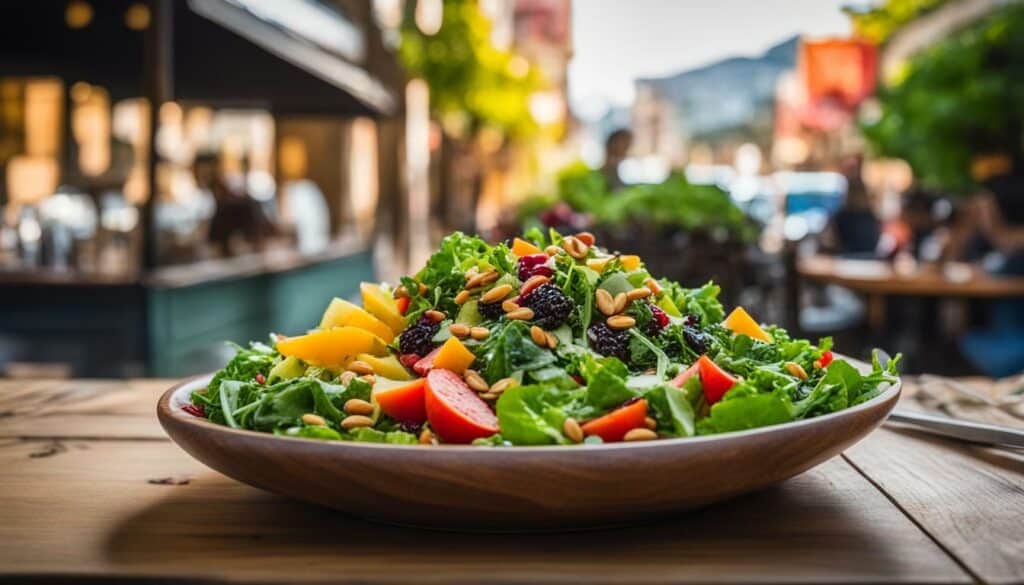
The Role of Carbohydrates in a Healthy Side Salad
Let’s debunk the myth that all carbs and high-fat foods are detrimental to your health. Carbohydrates play a vital role in maintaining brain function and providing essential nutrients for our bodies. While it’s true that some carbs, like refined sugars and processed grains, can have negative effects when consumed in excess, it’s important to distinguish between “good” and “bad” carbs.
Good carbs, also known as complex carbohydrates, are found in foods like whole grains, legumes, fruits, and vegetables. These carbs are digested slower, providing a steady release of energy and keeping you feeling fuller for longer. They also contain important vitamins, minerals, and fiber that support overall health.
On the other hand, bad carbs, such as sugary snacks and white bread, are quickly digested, leading to spikes in blood sugar levels and subsequent crashes in energy. These types of carbs lack the necessary nutrients and can contribute to weight gain and other health problems when consumed excessively.
The Benefits of Healthy Fats
Similarly, not all fats are created equal. While it’s important to limit saturated and trans fats, certain high-fat foods contain unsaturated fats that can be beneficial for heart health when consumed in moderation. Foods like fatty fish, olive oil, and avocados are rich in omega-3 fatty acids and monounsaturated fats, which can help lower cholesterol levels and reduce the risk of heart disease.
When incorporating these high-fat foods into your side salad, it’s crucial to practice portion control. While they offer health benefits, they are still calorie-dense, and excessive consumption can lead to weight gain. Aim for a balanced diet that includes a variety of nutrient-rich foods, including healthy fats, to support overall well-being.
| Healthy Side Salad Ingredients | Calories (per serving) |
|---|---|
| Dark leafy greens (spinach, kale) | 10 |
| Fresh vegetables (tomatoes, cucumbers) | 20 |
| Protein (grilled chicken, tofu) | 100 |
| Healthy fats (avocado, olive oil) | 50 |
| Low-fat dressing (vinaigrette) | 30 |
Remember, a healthy side salad is not just about the calories. It’s about choosing nutrient-rich ingredients, practicing portion control, and finding a balance that works for you. So go ahead, enjoy your side salad guilt-free, and reap the benefits of a well-rounded, delicious meal.
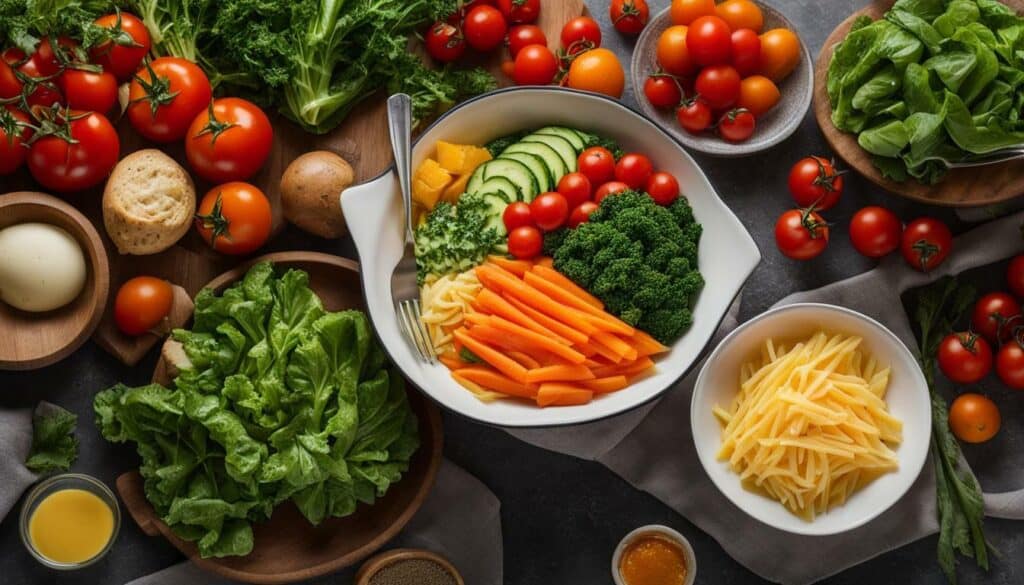
When it comes to high-fat foods, portion control is key for maintaining a balanced diet. While foods rich in unsaturated fats, such as fatty fish, olive oil, and avocados, can offer health benefits, consuming them in excess can lead to weight gain and potential health issues. By practicing portion control, you can enjoy these foods while keeping your calorie intake in check.
One effective way to manage portion sizes is by using visual cues. For example, a serving of fatty fish, like salmon or mackerel, is typically about the size of your palm. Try to aim for a portion that fits within this guideline, and you’ll be on track to enjoy the benefits of these nutritious foods without overindulging.
| High-Fat Food | Serving Size |
|---|---|
| Fatty Fish (salmon, mackerel) | Approximately the size of your palm |
| Olive Oil | 1 tablespoon |
| Avocado | 1/4 to 1/2 of a medium-sized avocado |
Another strategy for portion control is to be mindful of the calories in high-fat foods. While these foods can be nutritious, they are also energy-dense, meaning they contain a higher number of calories per gram compared to other foods. By incorporating them into your meals in reasonable quantities, you can enjoy their taste and nutritional benefits without exceeding your calorie goals.
Remember, portion control is not about depriving yourself but rather finding a balance that works for you. By being mindful of your portion sizes and making conscious choices, you can incorporate high-fat foods into a healthy eating plan that supports your overall well-being.
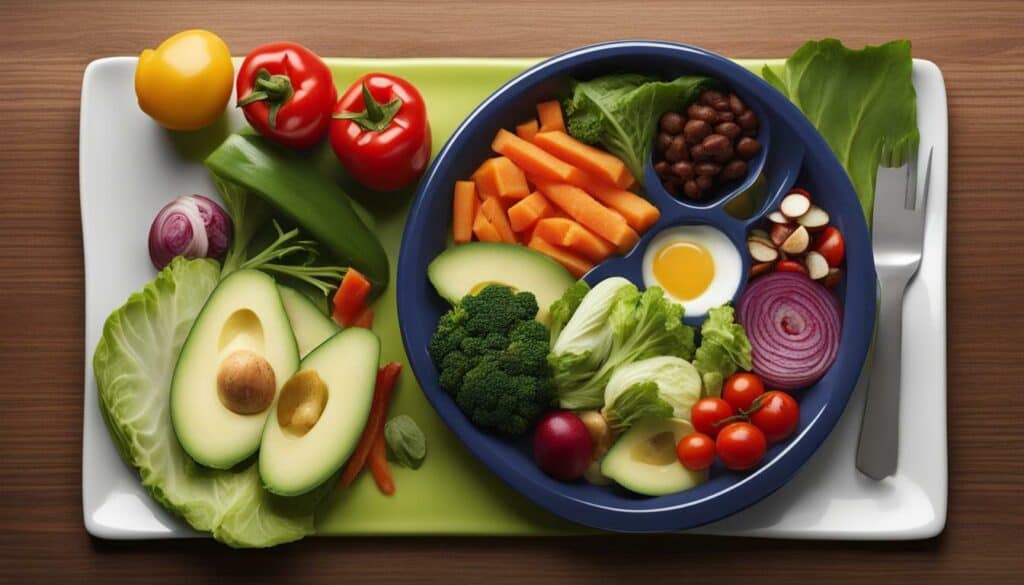
Ready to enjoy a delicious and guilt-free side salad? Here are some tips to make it healthy and low in calories.
1. Start with a Variety of Fresh Vegetables: Opt for a colorful mix of leafy greens like spinach, kale, and arugula, and add in crunchy vegetables like carrots, cucumbers, and bell peppers. These nutrient-packed veggies will provide essential vitamins and minerals without adding excessive calories.
2. Choose Lean Protein: To give your side salad an extra boost of protein, add grilled chicken breast, tofu, or beans. These options are lower in calories and saturated fats compared to meats like bacon or fried chicken. Plus, protein will help keep you feeling satisfied for longer.
3. Watch Out for Dressings: Avoid heavy, creamy dressings that can quickly escalate the calorie count of your salad. Instead, opt for vinaigrette dressings made with olive oil or a light balsamic dressing. You can also try using lemon juice or a sprinkle of herbs and spices to add flavor without the extra calories.
4. Get Creative with Toppings: Instead of reaching for high-calorie toppings like croutons or fried onions, experiment with healthier alternatives. Toasted nuts, seeds, fresh fruits, or a sprinkle of feta cheese can add interesting textures and flavors to your salad without packing on the calories.
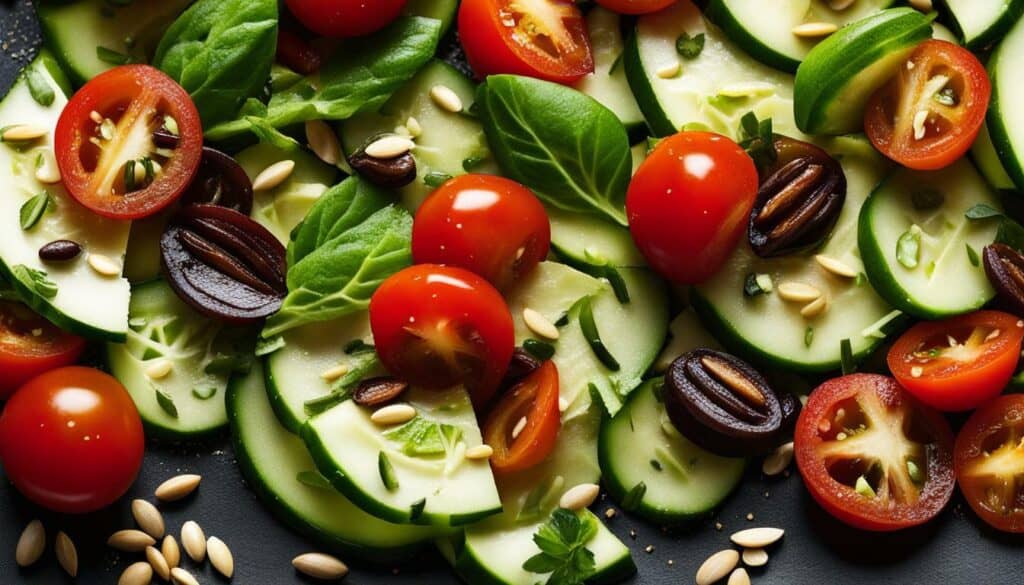
Remember, portion control is key. Keep an eye on the quantity of ingredients you’re adding to your side salad to ensure you’re not overdoing it. With these tips, you can create a delicious, nutrient-rich side salad that’s both healthy and low in calories.
| Ingredient | Calories (per serving) |
|---|---|
| Leafy Greens (Spinach, Kale, Arugula) | 10 |
| Carrots (shredded) | 25 |
| Cucumbers (sliced) | 8 |
| Bell Peppers (diced) | 12 |
| Grilled Chicken Breast | 120 |
| Tofu | 70 |
| Beans (Black, Kidney, Chickpeas) | 45 |
| Light Balsamic Dressing (2 tbsp) | 50 |
| Olive Oil (1 tbsp) | 120 |
| Lemon Juice (1 tbsp) | 4 |
| Toasted Nuts (Almonds, Walnuts) | 80 |
| Seeds (Chia, Flax, Sunflower) | 60 |
| Fresh Fruits (Strawberries, Blueberries) | 40 |
| Feta Cheese (1 oz) | 75 |
Exploring Tasty Side Salad Toppings and Dressing Options
Let’s get creative with side salad toppings and explore some delicious dressing options! When it comes to elevating the flavor of your side salad, the possibilities are endless. Whether you prefer a light and refreshing salad or something more hearty and flavorful, there’s a wide variety of toppings and dressings to choose from.
For those looking to add crunch and texture to their side salad, consider toppings like croutons, toasted nuts, or seeds. These additions not only provide a satisfying crunch but also add a delicious depth of flavor. If you’re a fan of savory toppings, try adding some crispy bacon bits, feta cheese, or diced avocado for a burst of creaminess.
When it comes to dressing options, you can go classic with a tangy vinaigrette or creamy with a rich ranch dressing. Experiment with different flavor profiles by trying dressings like balsamic glaze, honey mustard, or spicy chipotle. These dressings can take your side salad to the next level by adding a burst of flavor that complements the fresh ingredients.
Remember that portion control is key when it comes to dressings and toppings. While they can enhance the taste of your side salad, they can also add extra calories if not used in moderation. Be mindful of the quantities you use and consider lighter options such as drizzling your salad with olive oil and a squeeze of lemon juice for a healthier alternative.
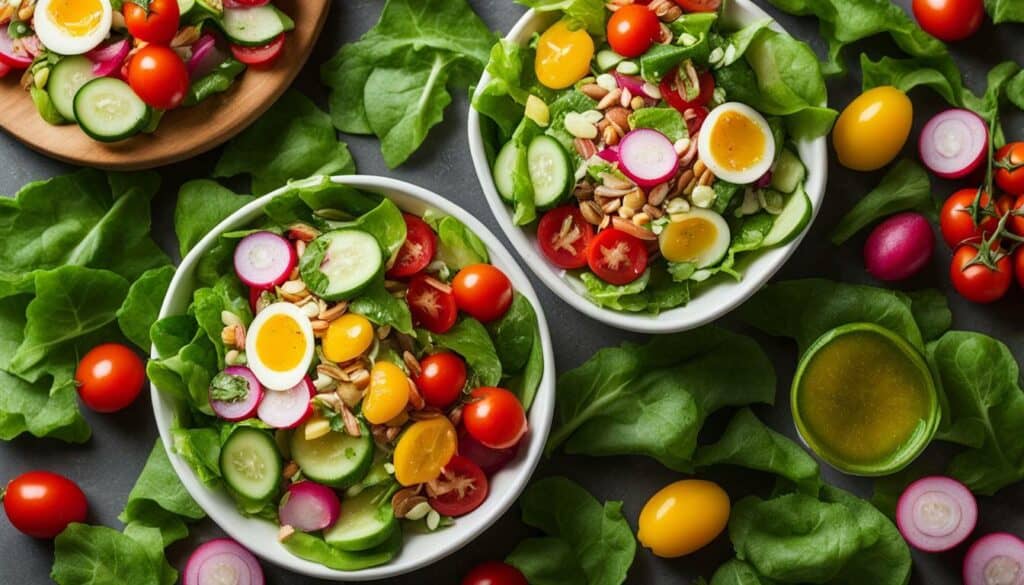
| Topping Options | Dressing Options |
|---|---|
| Croutons | Vinaigrette |
| Toasted nuts | Ranch |
| Seeds | Balsamic glaze |
| Bacon bits | Honey mustard |
| Feta cheese | Spicy chipotle |
| Avocado | Olive oil and lemon |
As you experiment with different toppings and dressings, don’t be afraid to mix and match flavors to create your own signature side salad. The key is to have fun and tailor your salad to your personal taste preferences. So, the next time you’re preparing a side salad, get creative and explore the endless possibilities of toppings and dressings!
Side Salad for Weight Loss: Tips and Strategies
If you’re looking to shed some pounds, a side salad can be a valuable addition to your weight loss journey. Salads are packed with nutrients, low in calories, and can help you feel satisfied without adding unnecessary pounds. However, it’s essential to pay attention to the ingredients and portion sizes to ensure your side salad is truly supportive of your weight loss goals.
When creating a side salad for weight loss, opt for a variety of colorful vegetables like spinach, kale, cherry tomatoes, cucumbers, and bell peppers. These vegetables are low in calories but rich in fiber, which can promote feelings of fullness and aid in digestion. You can also add lean protein sources like grilled chicken or tofu to make your side salad more satisfying.
| Tips for a Healthy Side Salad |
|---|
| 1. Choose nutrient-dense greens as the base. |
| 2. Add a variety of colorful vegetables. |
| 3. Include a source of lean protein. |
| 4. Use a light dressing or make your own using olive oil and vinegar. |
| 5. Be mindful of portion sizes. |
When it comes to dressing your side salad, opt for a light vinaigrette or make your own using olive oil and vinegar. These options are lower in calories compared to creamy dressings like ranch or Caesar. Additionally, be mindful of portion sizes. While salads are generally healthy, overeating even low-calorie foods can hinder your weight loss progress. Stick to a reasonable portion that leaves you feeling satisfied but not overly full.
Remember, a side salad is just one part of a healthy weight loss plan. It’s crucial to combine it with regular exercise, portion control, and a balanced diet. Incorporating nutritious side salads into your meals can help you create a calorie deficit while still enjoying delicious and satisfying food. So, grab a bowl, load it up with fresh veggies, and start your weight loss journey one crunchy bite at a time!

By being aware of side salad calories and making mindful choices, you can enjoy this delicious and nutritious side dish without derailing your health goals.
When it comes to salads, it’s important to pay attention to the calorie content. Popular salads like Caesar salad, pasta salad, chef salad, Greek salad, and Cobb salad can have different calorie counts. Mayo-based salads like tuna salad, egg salad, chicken salad, and macaroni salad also vary in calorie content.
Commercially available salads from restaurants like Wendy’s, Olive Garden, Subway, and Panera Bread can be high in calories, so it’s crucial to be mindful of the dressings and toppings added to these salads. These additions can greatly impact your calorie intake.
While it’s a common misconception that all carbs and high-fat foods are bad for you, it’s important to understand that carbohydrates are essential for brain function and provide important nutrients. Similarly, not all fats are unhealthy. Foods high in unsaturated fats, such as fatty fish, olive oil, and avocados, can actually be beneficial for heart health. However, it’s crucial to practice portion control when consuming high-fat foods.
By making informed choices and practicing portion control, you can create a healthy and low-calorie side salad that is both delicious and nutritious. Remember to choose ingredients wisely and opt for healthier alternatives to high-calorie toppings and dressings. Side salads can be a great tool for weight loss when incorporated into a balanced diet.
So, next time you’re enjoying a side salad, remember to consider the calories, make mindful choices, and savor every bite. With a little awareness and smart decision-making, you can enjoy the benefits of this tasty dish without compromising your health goals.
FAQ
Q: Are all salads low in calories?
A: No, the calorie content of salads can vary significantly depending on the ingredients used. Popular salads like Caesar salad, pasta salad, chef salad, Greek salad, and Cobb salad all have different calorie counts.
Q: Do mayo-based salads have high calorie contents?
A: Yes, mayo-based salads like tuna salad, egg salad, chicken salad, and macaroni salad can have varying calorie contents. It’s important to be mindful of the toppings added to these salads, as they can greatly impact calorie intake.
Q: Are commercially available salads high in calories?
A: Commercially available salads from restaurants like Wendy’s, Olive Garden, Subway, and Panera Bread can be high in calories. It’s crucial to pay attention to the dressings and toppings added to these salads, as they can significantly impact calorie intake.
Q: Are all carbs and high-fat foods bad for you?
A: No, it’s a common misconception that all carbs and all high-fat foods are bad for you. Carbohydrates are essential for brain function and provide important nutrients. Similarly, not all fats are unhealthy, as foods high in unsaturated fats, like fatty fish, olive oil, and avocados, can be beneficial for heart health.
Q: How important is portion control when consuming high-fat foods?
A: Portion control is important when consuming high-fat foods. While some high-fat foods can be beneficial for health, it’s crucial to consume them in moderation to maintain a balanced diet.
What Are the Nutrition Facts of Dr Pepper?
Dr pepper nutrition facts include zero calories, fat, and cholesterol. One serving size contains 150mg of sodium and 40g of carbohydrates, including 39g of sugar. Dr Pepper offers a unique blend of 23 flavors, making it a delicious soda choice. Enjoy the refreshing taste and refreshing dr pepper nutrition facts as part of a balanced diet.

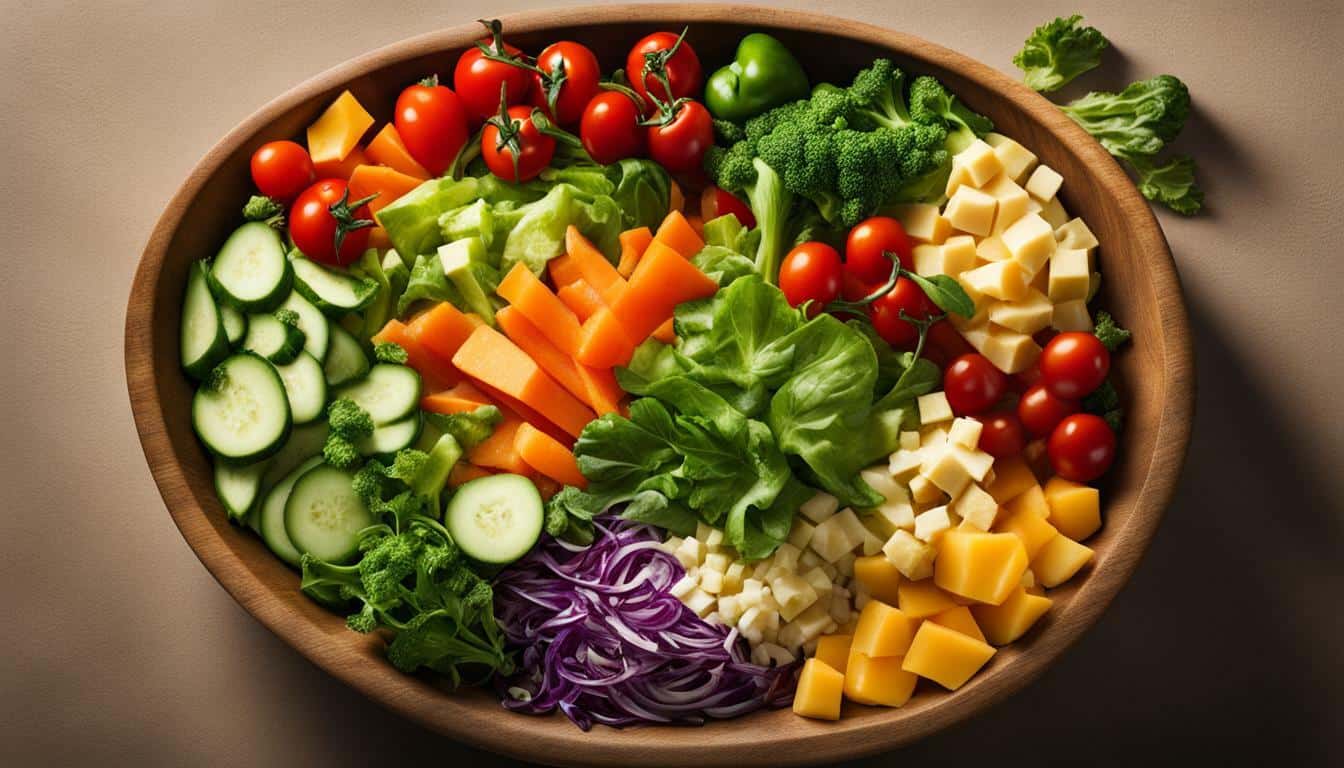



Leave a Reply